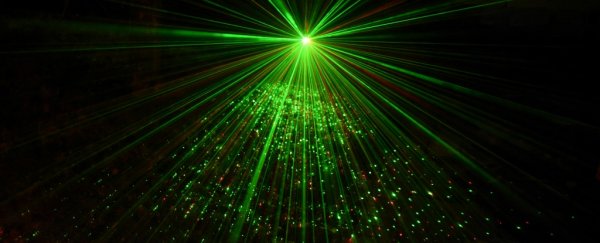Scientists have developed a new microscopy technique that can produce super-resolution imaging, showing live samples 10 times smaller than what can be currently achieved.
The technique has finally pushed the field of microscopy through a bottleneck created by the high heat and cost of lasers, and allows researchers to investigate the tiniest of samples without frying them.
"Currently, in order to switch each individual pixel on and off for super-resolution imaging, you need a bulky laser with lots of power," says Dayong Jin, a University of Technology Sydney (UTS) scientist and lead researchers on the project.
"The high-powered laser means you end up with very expensive equipment, typically over $1 million. And with such a high-powered laser shining on a fragile biological sample, the sample essentially becomes 'cooked'."
Obviously you don't want your tiny samples cooked when trying to look at them, so the researchers tried to find another option. Turns out, nanoparticles were the answer.
Other labs had already been using lamp-like nanoparticles for super-resolution bio-imaging – an area of imaging where the resolution of biological specimens is only 200 nanometres wide.
For reference, a human hair is around 75,000 nanometres wide.
The nanoparticles themselves act like tiny molecular probes to light up the structure you want to see.
So instead of going for the big expensive laser approach, the researchers used a low powered infrared laser, which allowed them to block out some unwanted luminescence, and look at structures as small as 13 nanometres in size.
"Significantly reducing the power requirement removes the need for bulky and expensive lasers and makes it much more biocompatible," says Jin.
What's really cool is the scale of this change – the researchers say this new technique will decrease the need for high powered lasers by two or three orders of magnitude – not only lowering the cost, but also the complexity of the microscopes.
Another member of the team, Jim Piper from Macquarie University in Australia, says this research should give scientists even more information about the building blocks of life on Earth.
"[These nanoparticles have] unique properties that will allow researchers to see deeper and more clearly at the cellular and intra-cellular level – where proteins, antibodies and enzymes ultimately run the machinery of life," he said.
"What we've done is illustrate that tiny nanoparticles offer substantial potential as a new generation of luminescent probes for optical nanoscopy. This opens up an entirely new avenue in the study of live biological processes."
The research has been published in Nature.
UTS Science is a sponsor of ScienceAlert. Find out more about their research.
